Are you fed up with the persistent disconnections of your Windows 10 WiFi, constantly interrupting your internet experience and causing frustration? It’s a common issue that can be quite bothersome, especially when you heavily rely on a stable internet connection for essential tasks like work, streaming, gaming, or browsing. However, you don’t need to worry anymore! In this article, we’ve got the ultimate solution to finally resolve the Windows 10 WiFi Keeps disconnecting issue once and for all, allowing you to enjoy uninterrupted internet connectivity without any annoying hiccups.
Related post: How to take a Scrolling Screenshot On Windows
- WHY IS YOUR WIFI CONSTANTLY DISCONNECTING – Possibilities
- Quick Fixes for WiFi Disconnection Issues in Windows 10
- FIX: Windows 10 wifi keeps disconnecting – Detailed Guide
- 1. Troubleshoot your Network
- 2. Uninstall the network card device
- 3. Changing the Power Settings for Wifi Adapter
- 4. Reset Wi-Fi AutoConfig service
- 5. Adjust your main network as private instead of public
- 6. Disable WiFi Sense to fix windows 10 WiFi disconnecting
- 7. Automatically update wireless drivers
- 8. Update the Drivers
- 9. Changing the Wifi Channel
- 10. RESETTING TCP/IP
- FAQs
- Conclusion
WHY IS YOUR WIFI CONSTANTLY DISCONNECTING – Possibilities

A lost WiFi connection can cause problems for your life whether you’re trying to send a crucial email or conduct a conference call on your PC or mobile device. Before we dive into the solutions, it’s important to understand why Windows 10 WiFi keeps disconnecting in the first place. There could be several reasons behind this annoying issue, including:
- Having the Airplane mode on: If the Airplane mode is turned on, it disables all wireless connections, including WiFi, which can result in frequent disconnections.
- Signal and the DNS server Issue: Poor signal strength from the WiFi router or issues with the DNS server can lead to slow speeds and frequent disconnections.
- Ineffective or Outdated WiFi drivers: WiFi drivers that are outdated, incompatible, or not functioning properly can cause connectivity problems, resulting in frequent disconnections.
- Bugs caused by a recent update: Recent updates to Windows 10 may introduce bugs that interfere with the WiFi connection, leading to frequent disconnections.
- Power settings issues: Power settings configured to conserve energy may put the WiFi adapter to sleep or reduce its performance, causing disruptions in connectivity and frequent disconnections.
- Inefficient Network Settings: Incorrectly configured network settings, such as incorrect IP address or DNS settings, can lead to frequent WiFi disconnections.
- Unsuitable wireless adapter configuration: Improperly configured settings on the wireless adapter, such as outdated firmware or incorrect channel settings, can result in connection issues and frequent disconnections.
- Broken or outdated router: A faulty or outdated WiFi router can cause disruptions in connectivity, resulting in frequent WiFi disconnections.
- Distance from the router: Being too far away from the WiFi router can result in weak signal strength, leading to frequent disconnections.
- Network interference: Interference from other WiFi networks, Bluetooth devices, or other electronic devices operating on the same frequency can disrupt WiFi connectivity, causing frequent disconnections.
- Service interruptions: Service outages or interruptions from the internet service provider (ISP) can cause frequent WiFi disconnections.
- Location with limited internet access: Being in an area with poor or no internet access, such as remote or rural areas, can result in frequent WiFi disconnections.
- Incompatibility between an operating system and a WiFi driver: Incompatibility between the current version of Windows 10 and the WiFi driver installed on the device can lead to connectivity issues, resulting in frequent disconnections.
Quick Fixes for WiFi Disconnection Issues in Windows 10
By performing these fast checks, you can quickly identify and resolve common issues that may be causing WiFi disconnections in Windows 10.
- Verify that the WiFi switch is turned on: Ensure that the WiFi switch or button on your device is in the “on” position to enable WiFi connectivity.
- Make sure you’re connecting to the correct WiFi network: Double-check that you are connecting to the right WiFi network and entering the correct password, as connecting to the wrong network can result in disconnections.
- Ensure that everything is plugged in correctly on your router: Check that all cables, including power and Ethernet cables, are properly plugged in and securely connected to your router.
- Move your device closer to the router if there is a lot of interference: Interference from other devices or objects can disrupt WiFi signal strength. Try moving your device closer to the router or consider purchasing a WiFi range extender to boost the signal.
- Check the connection using an Ethernet cable: Connect your device to the router using an Ethernet cable to check if the issue persists. If the connection is stable with Ethernet, it may indicate a problem with the wireless signal.
- Check with your ISP for any connection problems or service outages: Contact your Internet Service Provider (ISP) to check if there are any known issues or outages in your area that could be causing WiFi disconnections.
- Eliminate any equipment or objects that may be interfering with your router: Remove any devices, appliances, or objects that could potentially interfere with the WiFi signal, such as microwaves, cordless phones, or metal objects.
FIX: Windows 10 wifi keeps disconnecting – Detailed Guide
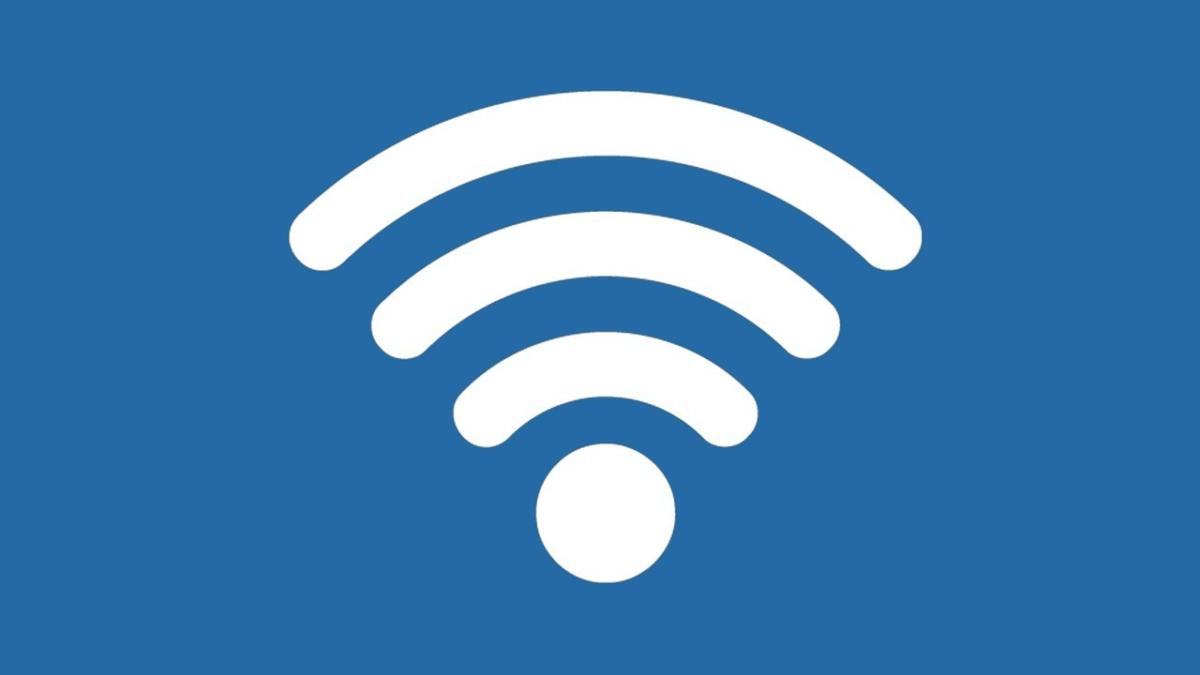
Now that we know the potential causes of the issue, and quick fixes to resolve the problem. If the problem persists, it means that we need to look into the more detailed solution for that let’s move on to the ultimate solutions to fix Windows 10 WiFi keeps disconnecting problem.
There are several methods to override this problem. You have to scroll down this article to know the fixes.
- Troubleshoot your Network
- Uninstall the network card device
- Changing the Power Settings for Wifi Adapter
- Reset Wi-Fi AutoConfig service
- Adjust your main network as private instead of public
- Disable WiFi Sense to fix windows 10 WiFi disconnecting
- Automatically update wireless drivers
- Update the Drivers
- Changing the Wifi Channel
- RESETTING TCP/IP
1. Troubleshoot your Network
The automated Troubleshooter tool has the ability to automatically locate and fix certain problems on your computer. However, this tool is very helpful as you can fix any problem using these troubleshooters. But these troubleshooters cannot fix every occurring issue. To use it follow these steps.
- Click on the Windows key + C on your keyboard in order to bring up the barcode.
- Now, type Troubleshoot and tap on Troubleshoot.

- Now type network troubleshooter in the search option above.
- Then tap on the network troubleshooter in order to launch the troubleshooter.
2. Uninstall the network card device
If there is an error due to network card driver’s corruption, this wifi error could occur even in Windows 8. The solution is you have to uninstall the network card device from
- The first step Press the Windows + W key on your keyboard.
- Now, type device manager in the search box and press Enter.

- Now, right-click on the network card.
- Then click Uninstall and restart the computer.

- Now, tap on Windows + W key on the keyboard.
- Then head to the list of installed programs.
- Now uninstall the network card device drivers from this list of programs.
3. Changing the Power Settings for Wifi Adapter
First, install the latest device drivers from the manufacturer’s website. If still the problem is not resolved. In addition to updating drivers, changing the power settings for the WiFi adapter can also be beneficial. By default, Windows 10 may turn off the WiFi adapter to save power, leading to disconnection issues. To prevent this from happening, one can go to the Device Manager and access the properties of their WiFi adapter. After selecting the Power Management tab, one can uncheck the box that says “Allow the computer to turn off this device to save power.” This change can be saved by clicking OK.
Adjust the power options by following these steps.
- Head to the control panel
- Now click on Device Manager.
- Then right-click on the installed network adapter
- Now choose Properties from the menu.

- Now tap on the Power Management tab.

- Allow the computer to turn off this device to save power
- Now, click OK to save changes.
If still your wifi keeps on disconnecting then adjust following these steps.
- First, head to the control panel.
- Now, select Power Options under Control Panel.

- Now, tap on Change plan settings.
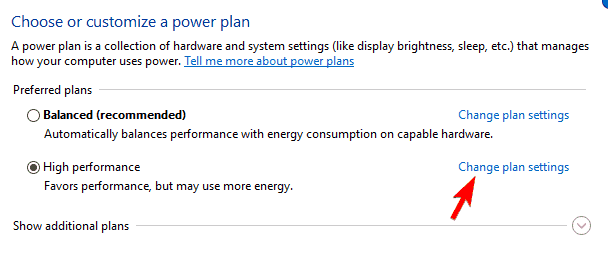
- Then click on the Change advanced power settings to edit the plan settings.

- Now, scroll down to the wireless adapter settings.
- Now click on the Battery Operation and Connectivity drop-down menu
- Then, select Maximum Performance for Both.
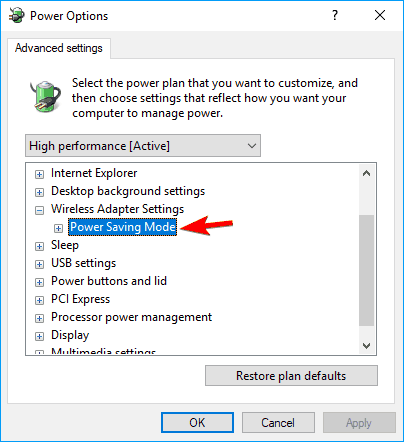
4. Reset Wi-Fi AutoConfig service
- Tap on the Windows logo and r key at the same time.
- Now Type services.msc and press Enter.
- Locate and press enter on WLAN AutoConfig.
- Now, adjust the startup type to automatic.
- Now, Tap on Apply and OK to save.
Quickly check to see if your Windows 10 Wi-Fi connection keeps on disconnecting or not. If the problem is not resolved, then you need to try the next step.
5. Adjust your main network as private instead of public
- Tap on the Wi-Fi icon in the taskbar.
- Then tap on the connected Wi-Fi network to see the sub-menu.
- Click Properties appears below the connected WiFi network

- Below Make this computer discoverable, and slide the slider on.

- Now, type Homegroup in the Windows search bar.

- Tap on the homegroup, and click Change network location.
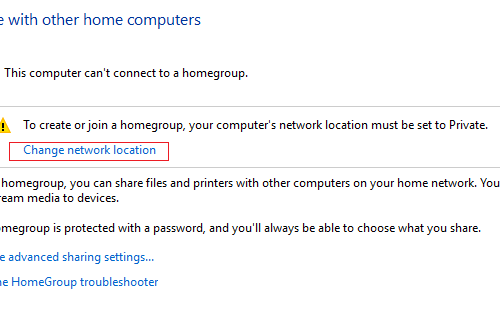
- Then, click Yes in order to make this network a private network.

- Then right-click on the Wi-Fi icon in the taskbar and select Open Network and Internet Settings.

- Now, tap on Network and Sharing Center.

- Now, verify that the listed network appears as a Private Network.
6. Disable WiFi Sense to fix windows 10 WiFi disconnecting
Another feature that can cause problems with WiFi connections is WiFi Sense. This feature allows a computer to automatically connect to known WiFi networks. While this can be useful, it can also lead to disconnection issues.
To disable WiFi Sense, one can access the Settings menu by pressing the Windows key and the I key simultaneously. Once in Settings, one can navigate to Network & Internet and select Wi-Fi. After scrolling down to the bottom of the page, one can click on Manage Wi-Fi settings and turn off the options for “Connect to suggested open hotspots” and “Connect to networks shared by my contacts.”
If you have a previous version of Windows follow these:
- Head to Settings.
- Now, tap on Network and Internet.
- Now, click WiFi.
- Then click Manage WiFi settings.

- Scroll down to disable WiFi sense.
- Call the proposed open contact points Connect to networks that my friends share.
- Save the changes by clicking OK / Save.
7. Automatically update wireless drivers
If your Problem is still not solved follow these steps.
- Tap the Windows logo key and R on your keyboard
- Now, type devmgmt.msc and press Enter.
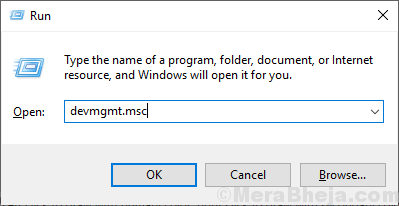
- Expand Network adapters, and right-click on the installed network adapter, and click on Update Driver.
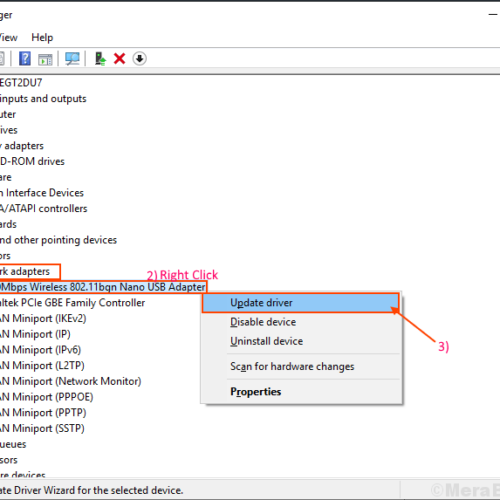
- Now select search automatically for updated driver software.
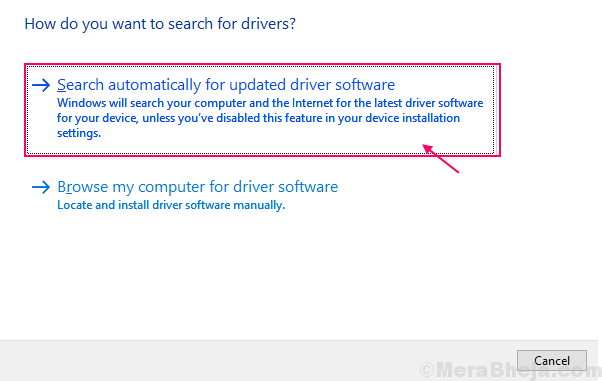
- Now, quickly restart your computer to save the changes.
8. Update the Drivers
Outdated WiFi drivers can be a significant cause of disconnection issues. To address this, one can follow a few simple steps to update their drivers. By pressing the Windows key and the X key simultaneously, one can access the Device Manager. Once in the Device Manager, one can navigate to the Network Adapters section and select their WiFi adapter. After right-clicking on the adapter, one can choose to update the driver. It is recommended that one chooses the option to search automatically for updated driver software and waits for the update to be installed.
- To expand the category, perform a right-click on Start > Device Manager and choose Network Adapters.
- Next, choose Update Driver from the context menu of your WiFi adapter.
9. Changing the Wifi Channel
If the WiFi channel is congested, it can also lead to disconnection issues. One can change the WiFi channel to fix this problem by accessing the properties of their WiFi adapter in the Device Manager. After selecting the Advanced tab, one can choose the option for “802.11n Channel Width for 2.4GHz” and change the value to “20MHz Only.” This change can be saved by clicking OK.
10. RESETTING TCP/IP
Lastly, resetting TCP/IP, a protocol used to communicate over the internet, can sometimes resolve disconnection issues.
- After typing “powershell” into the search box on the Start button, click “Run as Administrator.”
- Type netsh int ip reset into the PowerShell window and then hit Enter.
- If the task is completed successfully, the window should display multiple “Resetting, OK!”
Restart your computer and check whether the issue still persists.
FAQs
A. There could be several reasons why your Windows 10 WiFi keeps disconnecting, including outdated drivers, incorrect network settings, interference from other devices, power-saving settings, firewall or antivirus interference, or Windows updates.
A: You can update your WiFi drivers in Windows 10 by following these steps:
1. Press the Windows key + X and select Device Manager from the context menu.
2. Expand the Network Adapters section.
3. Right-click on your WiFi adapter and select Update driver.
4. Choose the option to search automatically for updated driver software.
5. Follow the on-screen instructions to install the latest drivers for your WiFi adapter.
A: Yes, interference from other devices such as cordless phones, Bluetooth devices, and microwave ovens can disrupt WiFi signals and cause frequent disconnections. Keeping your WiFi router away from other electronic devices and choosing a less crowded WiFi channel can help minimize interference.
A: You can reset network settings in Windows 10 by following these steps:
1. Press the Windows key + X and select Command Prompt (Admin) from the context menu.
2. In the Command Prompt window, type the following commands one by one, pressing Enter after each command:netsh winsock reset
netsh int ip reset
ipconfig /release
ipconfig /renew
3. Restart your computer and check if the WiFi disconnecting issue is resolved.
Conclusion
In conclusion, there are several solutions that can be employed to address disconnection issues with WiFi in Windows 10. However, if these solutions do not work, resetting network settings or contacting one’s internet service provider may be necessary. With some troubleshooting, one should be able to get their WiFi connection functioning smoothly once again.

![Fix Windows 10 WiFi Keeps Disconnecting [SOLVED 2023] Windows 10 wifi keeps disconnecting.](https://techinpack.com/wp-content/uploads/2020/07/windows-10-stars-l-840x720.jpg)
1 Comment
Fantastic blog you have here but I was wondering if you knew of any forums that cover the same topics discussed here? I’d really like to be a part of group where I can get advice from other knowledgeable individuals that share the same interest. If you have any recommendations, please let me know. Thanks!